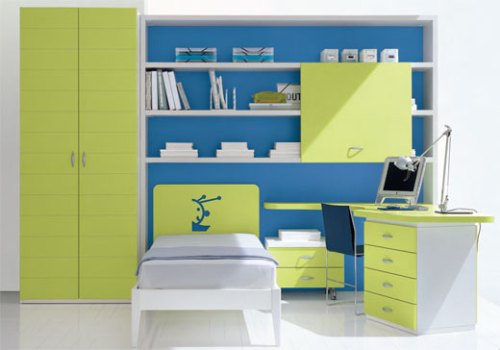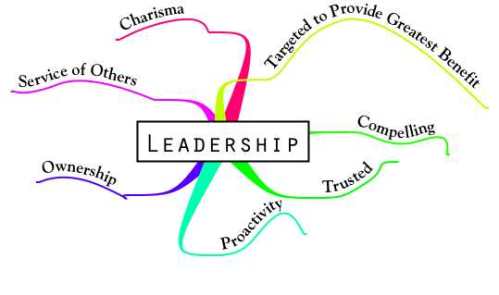When selecting color for a room, keep in mind that each color has a psychological value. Think about how those colors make you feel. The main color of your room can have an effect on your mood. These colors can make you feel anything from tranquil to rage. So when trying to create peace and harmony in your home choose your colors wisely. Some colors in large amounts will have just the opposite affect on you and your loved ones’ moods.
What mood do you want to create? Which colors will help you achieve that mood?
Find clear answers to these questions. If you find this task quite difficult try to look at magazines, decorating books, blogs and websites for ideas, or let your fabric be your guide. In fact, this is a good approach to take even if you’re starting from scratch. Fabric, carpeting, furniture and tile are available in a more limited range of colors than is paint, so choose them first and then decide on your paint color. Once you’ve found what you where searching for limit the number of colors in a room to no more than three or four. Too many colors can make a room look busy or cluttered.
Paint is a fairly inexpensive and transforms a room more quickly than anything else you can do so you can afford to experiment a little.
Room Colors
Understand that colors behave in three basic ways : active, passive, and neutral , and you can easily match every room’s colors to your personal desires and taste and to the room’s purpose. Light colors are expansive and airy, they make rooms seem larger and brighter. Dark colors are sophisticated and warm; they give large rooms a more intimate appearance.
Now let’s find more about some colors.
Red raises a room’s energy level. It’s a good choice when you want to stir up excitement, particularly at night. In the living room or dining room, red draws people together and stimulates conversation. In an entryway, it creates a strong first impression. Red has been shown to raise blood pressure, speed respiration and heart rate. It is usually considered too stimulating for bedrooms, but if you’re only in the room after dark, you’ll be seeing it mostly by lamplight, when the color will appear muted, rich, and elegant. Red, the most intense, pumps the adrenaline like no other hue.
Crimson can make some people feel irritable. With red invoking feels of rage and hostility is a color that should be avoided as the main color of a room. Sitting for long periods of time in a room this color will likely breakdown any peace and harmony you are striving to create in your home. Ancient cultures used the color red to stimulate the body and mind and to increase circulation.
Yellow captures the joy of sunshine and communicates happiness. It’s perfect for kitchens, dining rooms, and bathrooms, where happy color is energizing and uplifting. In halls, entries, and small spaces, yellow can feel expansive and welcoming.Yellow although is a cheery color is not a good choice in main color schemes of a room. People are more likely to lose their tempers in a yellow room. Babies also seem to cry more in a yellow room. This color tends to create feeling of
frustration and anger in people. This color is the most fatiguing on the eyes.In chromotherapy yellow was believed to stimulate the nerves and purify the body.

Blue brings down blood pressure and slows respiration and heart rate. That’s why it’s considered calming, relaxing, and serene, and is often recommended for bedrooms and bathrooms. Be careful, however: A pastel blue that looks pretty on the paint chip can come across as unpleasantly chilly when it’s on the walls and furnishings, especially in a room that receives little natural light. If you opt for a light blue as the primary color in a room, balance it with warm hues in the furnishings
and fabrics.
To encourage relaxation in the rooms where people gather family rooms, living rooms, large kitchens consider warmer blues, such as periwinkle, or bright blues, such as cerulean or turquoise. Blue is known to have a calming effect when used as the main color of a room. When going with blue go for softer shades of blue. Dark blue has the opposite effect. Dark blue evokes feels of sadness. So refrain from using darker blues in your main color scheme. Stay with the lighter shades of blue to give you and your loved ones a calm effect.
Green is considered the most restful color for the eye. Combining the refreshing quality of blue and the cheerfulness of yellow, green is suited to almost any room in the house. In a kitchen, a sage or medium green cools things down; in a family room or living room, it encourages unwinding but has enough warmth to promote comfort and togetherness. In a bedroom, it’s relaxing and pleasant.Green also has a calming effect when used as a main color for decorating. It is believed to relieve stress by helping people relax. Also believed to help with fertility this is a great choice for the bedroom.
Purple in its darkest values (eggplant, for example) is rich, dramatic, and sophisticated. It’s associated with luxury as well as creativity, and as an accent or secondary color, it gives a scheme depth. Lighter versions of purple, such as lavender and lilac, bring the same restful quality to bedrooms as blue does, but without the risk of feeling chilly.
Orange evokes excitement, enthusiasm and is an energetic color. While not a good idea for a living room or for bedrooms this color is great for an exercise room. It will bring all the emotions out that you need when jumping into your fitness routine.In ancient cultures orange was used to heal the lungs and increase energy levels.
Neutrals (black, gray, white, and brown) are basic to the decorator’s tool kit. All-neutral schemes fall in and out of fashion, but their virtue lies in their flexibility: Add color to liven things up; subtract it to calm things down. Black is best used in small doses as an accent , indeed, some experts maintain that every room needs a touch of black to ground the color scheme and give it depth.
To make the job easier, you can rely on the interior designer’s most important color tool: the color wheel.
Something about Ceiling and Walls
The ceiling represents one-sixth of the space in a room, but too often it gets nothing more than a coat of white paint. In fact, for decades, white has been considered not only the safest but also the best choice for ceilings. As a general rule, ceilings that are lighter than the walls feel higher, while those that are darker feel lower. Lower” need not mean claustrophobic: Visually lowered ceilings can evoke cozy intimacy.
Dark walls make a room seem smaller, and light walls make a room seem larger.
Conclusion
These general guidelines are a good starting point in your search for a paint color. But remember that color choice is a very personal matter. You’re the one who has to live with your new paint color, so choose a hue that suits you, your family and your lifestyle. And after investing time to select just the right color, make sure it continues to look that way long-term by investing in a top quality paint.












 What does it take to become a Leader?
What does it take to become a Leader? 

